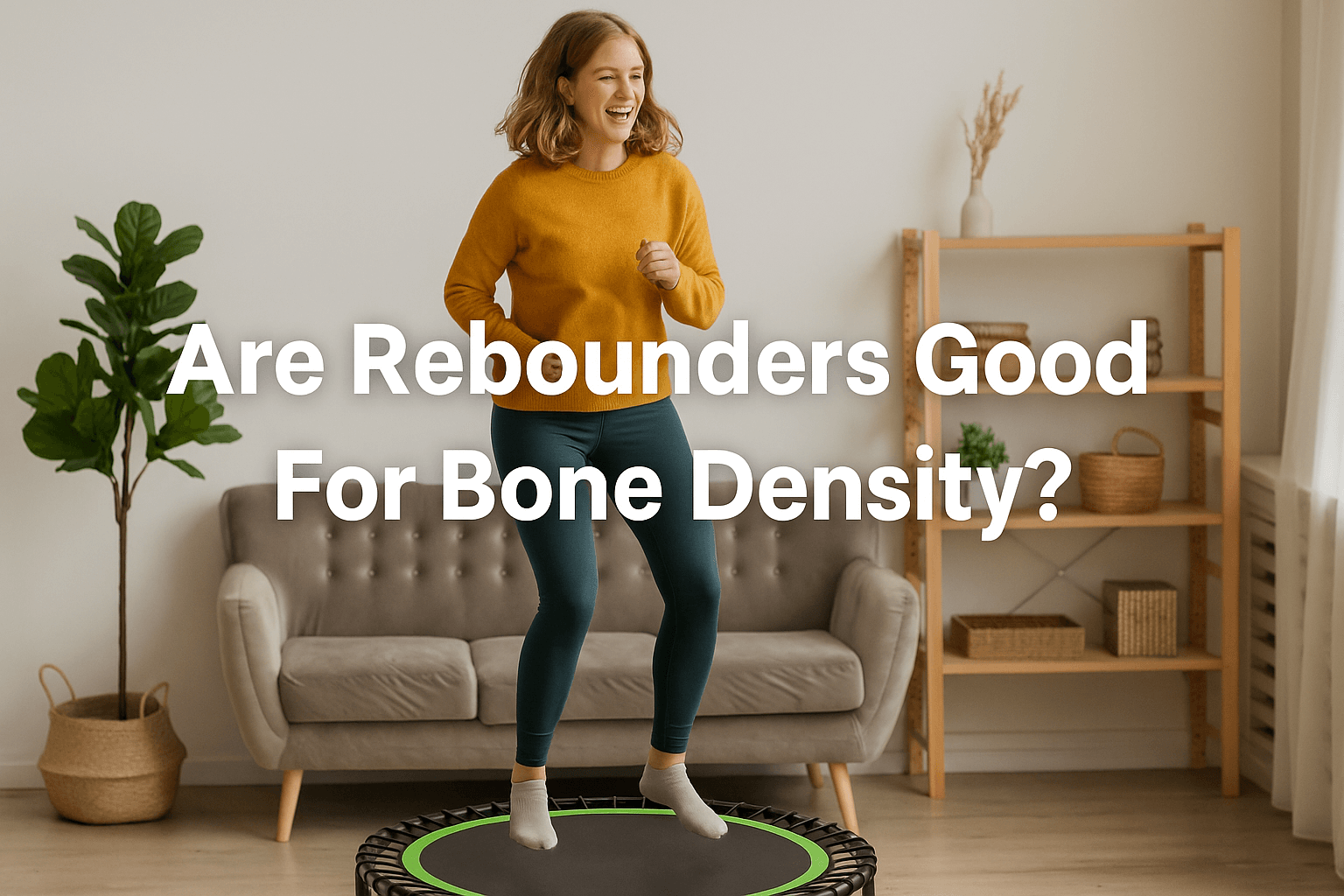
Are Rebounders Good For Bone Density?
Think trampolines are just for kids’ birthday parties? Think again. The short answer: yes, rebounders are a form of exercise that can play a role in keeping you active. Bouncing might look like fun and games, but it provides movement that helps with fitness, balance, and joint-friendly activity.
When it comes to bone health, established recommendations include weight-bearing exercise, good nutrition, and medical guidance. Rebounding can fit alongside these as a low-impact way of staying active.
Can you build Stronger Bones with Rebounding?
Understanding Bone Density and Exercise
Bones are living tissue that respond to the right kind of stress. Exercise is one of the signals that keeps this process going.
Rebounding provides gentle, repetitive movement that adds to your daily activity levels. While it isn’t a stand-alone solution for bone density, staying active is an important piece of the puzzle.
The Science of Impact and Bone Health
Wolff’s Law explains that bones adapt when placed under stress, much like muscles do when lifting weights. The challenge is finding the right amount—too much can cause injury, too little may have little effect.
Rebounding offers light, joint-friendly movement that may contribute to regular activity, without the strain of high-impact options.
Rebounding's Unique Low-Impact Force
Unlike pounding the pavements or heavy lifting, bouncing on a rebounder is far gentler on the joints. This makes it approachable for beginners or anyone looking for an alternative form of exercise.
Many people enjoy rebounders because they’re fun, easy to fit into a routine, and can help you stay active over the long term.
Does Rebounding Stimulates Bone Growth?
Applying Gentle, Consistent Force
Every bounce adds consistent, rhythmic stress through your body. While this type of exercise alone isn’t enough to build bone density, it contributes to movement variety and helps keep you mobile.
Think of it as one of many ways to keep your skeleton and muscles engaged.
Activating Bone-Building Cells
Weight-bearing and resistance activities are widely recognised for encouraging bone-strengthening processes. Rebounding is much lighter in intensity but still provides a stimulus for movement.
For older adults, keeping active in safe, enjoyable ways is valuable—not just for bones, but for independence and confidence.
Rebounding as a Key Part of Your Bone Health Routine
Simple Rebounding Exercises for Bone Density
The Basic Bounce and Gentle Jogging
You don’t need circus skills to start rebounding. A gentle jog or basic bounce for 10–15 minutes can be a good way to move more during the day.
It’s approachable, fun, and works well as a supplement to other recommended exercises.
The Role of Progressive Overload
Progression is a principle in all exercise. Once you’re comfortable, adding movements like high knees or side-to-side steps keeps things interesting.
This helps you challenge muscles and coordination, alongside any other exercise routines you follow.

Combining Rebounding with Other Bone-Building Activities
The Importance of Diet and Nutrition
Rebounding is just one part of the picture. Nutrition plays a critical role—calcium, vitamin D, and protein are essential building blocks for bone health.
Exercise provides the activity; food provides the materials. Both matter.
Complementary Exercises like Strength Training
Activities such as strength training, yoga, or balance exercises are well-established for protecting bones and reducing fall risk.
Rebounding can sit alongside these, adding variety and enjoyment to an overall approach.

Final Thoughts
Rebounding isn’t just child’s play—it’s a fun, low-impact way to add movement into your life. While it shouldn’t replace proven strategies like strength training, good nutrition, and medical advice, it can be a useful extra.
And the best part? It’s enjoyable. That little bounce in your living room could make it easier to stay consistent with your daily activity.
⚠️ Disclaimer: This article is for informational use only and should not be taken as medical advice. Always consult a healthcare professional before starting any new exercise programme.
Have you checked out our other posts?
Are Rebounders Good For Seniors?
Are Rebounders Good For Weight Loss?
Are Rebounders Good For Knees?
Are Rebounders Good For Osteoporosis?
Are Rebounders A Good Workout?




Leave a comment